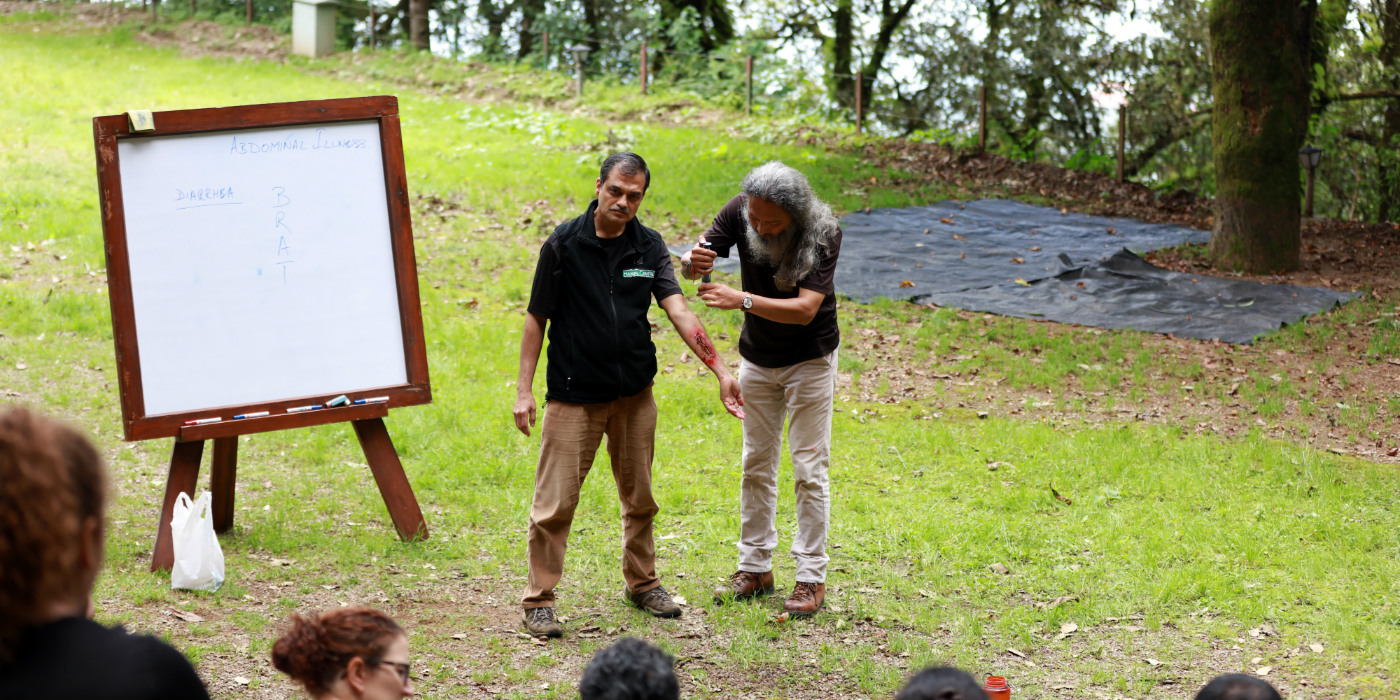
Akshay Shah, Program Director, Hanifl Centre
Newspapers reported in September 2018 that a man had passed away on a mountaineering expedition. At base camp, he had been exhausted, had shortness of breath, was complaining of chest pain and unusual sounds in his chest during the days prior. Sadly, due to lack of training and awareness, his teammates couldn’t recognise the classic signs and symptoms of High Altitude Pulmonary Edema (HAPE), which ultimately led to his death.
This was, in fact, one of the 34 trekking related deaths that happened in 2017 and 2018 (Source: IMF Risk Management Conference 2019 ). Overall there were 47 of deaths during trekking, skiing and mountaineering in the past two years. The sad fact is that more than half of these deaths could have been prevented had there been first aid trained people in the group.
India has hundreds of adventure tour operators and trekking companies spread across the country and many of them operate under skeletal guidelines with respect to safety and staff training. There is not a single safety policy that they are mandated to adhere to nor are there any minimum training standards required by Indian law. Over the past few years, social media presence in the “outdoor world” has increased tremendously and has brought us information on injuries and deaths that we would have otherwise not heard of. The injuries and deaths mostly points to lack of awareness among the clients, inadequate resources put in by the operator, large group of clients with few leaders, all of which adds up to a recipe for disaster.
In the US, Wilderness First Responder training (9-10 days duration) for staff is considered the ‘golden standard’ for commercial adventure tour operators. The ability to assess a situation and act quickly is the key in life threatening situations. This skill, however, comes from diligent practice during the course where participants take turns in playing the role of patient and care provider. This training is offered in India a few times a year while the ‘entry level’ (2 ½ -day) course is offered through the year, at various locations.
First aid basics
First aid is sometimes synonymous with common sense and common sense is perhaps the first thing that disappears in panic. In such a situation, simple rules, learnt by heart, save the day.
1. Do not panic. Take a deep breath. Call for professional help.
2. Do a quick survey of the scene and check for any possible dangers.
3. Do a quick ABC check, which is Airway, Breathing and Circulation in the same sequence. This may be lifesaving in itself.
A: Airway means checking for any obstruction, like tongue, chewing gum, a piece of food, small toy that is occluding or can occlude the airway.
B: Breathing simply means to check if the patient (maybe unresponsive) is breathing properly or in respiratory distress by looking, listening and feeling.
C: Circulation is checking for a pulse. This may be radial (wrist) or carotid (neck).
4. Additionally, look for distress (physical or mental).
5. Take out time and learn CPR before a trip.
In the end, as we constantly reiterate in all our classes: "We are not doctors. We are people who respond to traumatic/medical/environmental emergencies with our level of training in good faith, till help arrives."
And that sometimes is all that is required to save a life.







